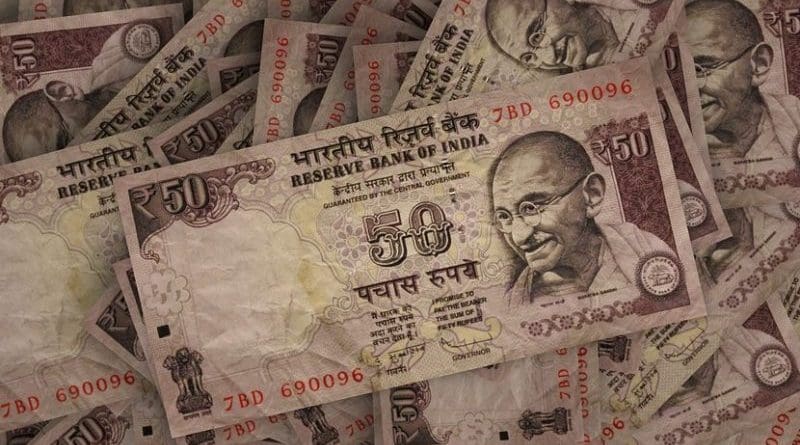India’s Demonetization Drive: Challenges And Imperatives In Combating Financial Crimes – OpEd
The Indian government’s 2016 decision to demonetize currency aimed to combat corruption and terrorism by tackling black money. However, the policy encountered significant challenges and fell short of its goals. This raises concerns about Modi government’s future approach to combating corruption and terrorism financing, especially given the impending evaluation by the Financial Action Task Force (FATF). On November 8, 2016, the Indian government announced the demonetization of 500 and 1,000 rupee notes, which represented 86% of the currency in circulation.
Although the initial announcement emphasized worries regarding counterfeit notes, it did not explicitly address other potential advantages such as broadening the tax base and encouraging traceable transaction methods. Demonetizing currency primarily focuses on existing holdings and thus has minimal impact on addressing the continual generation of undeclared income, which remains a persistent issue. There was widespread recognition that the bulk of the black economy was entrenched in sectors like real estate and gold, rather than solely reliant on cash holdings.
Modi administration overlooked this dimension, choosing to concentrate exclusively on targeting currency reserves. The mismanagement and inefficiency of the entire initiative became evident due to the glaring lack of preparedness demonstrated by the Reserve Bank of India (RBI), as evidenced by the issuance of numerous circulars subsequent to the initial notifications of demonetization.
From November 9 to December 31, 2016, the Reserve Bank of India (RBI) released a total of 57 official circulars, constantly modifying the terms regulating public deposits, withdrawals, and exchanges involving demonetized currency. The sluggish replenishment of automatic teller machines with new cash, coupled with a stream of amended notifications and the scarcity of new 500-rupee bills compared to the relatively plentiful supply of new 2,000-rupee bills – which were less conducive for everyday transactions – underscored the RBI’s lack of readiness to implement the policy effectively.
As per media accounts, elaborate money-laundering networks surfaced post-demonetization, assisting affluent Indians in depositing significant sums of formerly undisclosed currency without attracting attention from tax authorities. These individuals sold old notes at discounted rates to intermediaries, who then engaged low-income Indians to deposit or exchange them at banks. Numerous affluent Indians sought assistance from acquaintances and family members to channel previously undeclared funds into the banking system, while some resorted to advance paying salaries to numerous employees.
In a press briefing, former Indian Finance Minister, Arun Jaitley, acknowledged the re-entry of black money into the banking system. He noted that tax authorities were examining individuals’ accounts to identify and impose taxes on such funds. Additionally, he revealed ongoing investigations into 1.8 million bank accounts that exhibited cash inflows during the demonetization period, appearing incongruous with their tax records. Furthermore, he emphasized the scrutiny of 200 “high-risk clusters” of individuals.
According to the RBI, commercial banks returned over 99% of the demonetized currency. Within a year, the currency in circulation had reverted to its pre-demonetization level, indicating the failure of India’s demonetization effort to eradicate illicit cash transactions. The shortcomings of India’s extensive demonetization initiative have raised doubts about its effectiveness in combating terrorism financing (TF) and money laundering (ML). Despite the demonetization, the Indian government continues to investigate 1.8 million bank accounts and 200 individuals associated with unusual deposits during the demonetization period. The outcomes of these investigations, including the extent of accounts connected to ML and TF, remain uncertain, casting skepticism on the impact of the demonetization policy.
Moreover, inquiries arise concerning the origin of these unusual deposits. Were they deposited by customers directly at the counter, or were alternative methods involved? If the latter, how many instances involved counter transactions? The relatively small figure of 200 individuals prompts concerns about the justification for such an extensive demonetization effort. Was this low number a consequence of inadequate comprehension or weak monitoring mechanisms?
Given that the demonetization policy fell short of its intended goals in combating corruption and terrorism financed by black money, there is an urgent need to reevaluate strategies. What alternative measures or contingency plans will be implemented to achieve these objectives, particularly in curbing terrorism financing? While demonetizing currency targets existing holdings, it does little to prevent the continued generation of undeclared income or black money. What measures are being taken to impede the ongoing generation of black money?
Likewise, a substantial fraction of India’s black money finds its way into investments in real estate, gold, jewelry, and offshore properties. What specific measures have been taken to tackle this issue and eradicate such unlawful investments? These inquiries hold immense significance, particularly in light of the impending assessment by the FATF team during the Mutual Evaluation (ME) process of Indian financial institutions’ policies. The result of this evaluation will significantly influence India’s adherence to international standards in combating terrorism financing (TF) and money laundering (ML). Hence, it is imperative for the Indian government to address these concerns and implement robust measures to effectively combat financial crimes.

